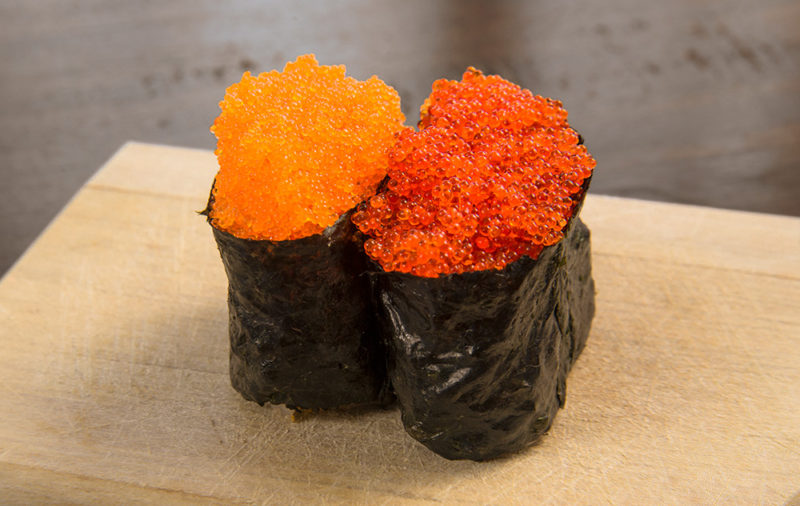
Tobiko and Masago Sushi, Types, Sustainability, + (2023)
Despite their notable differences in many aspects, Tobiko and Masago are often used interchangeably in Japanese cuisine. This article will dissect all dissimilarities between this popular pair and turn you into an expert on Tobiko and Masago. What is Tobiko (Flying Fish Roe)? Credit: @seascape.minimart

Tobiko vs Masago
While they are often used interchangeably in Japanese food, there are some significant differences between tobiko vs masago. In this guide, we explain where they come from, how they taste, how to use them, and more. Let's dive in! What is tobiko?
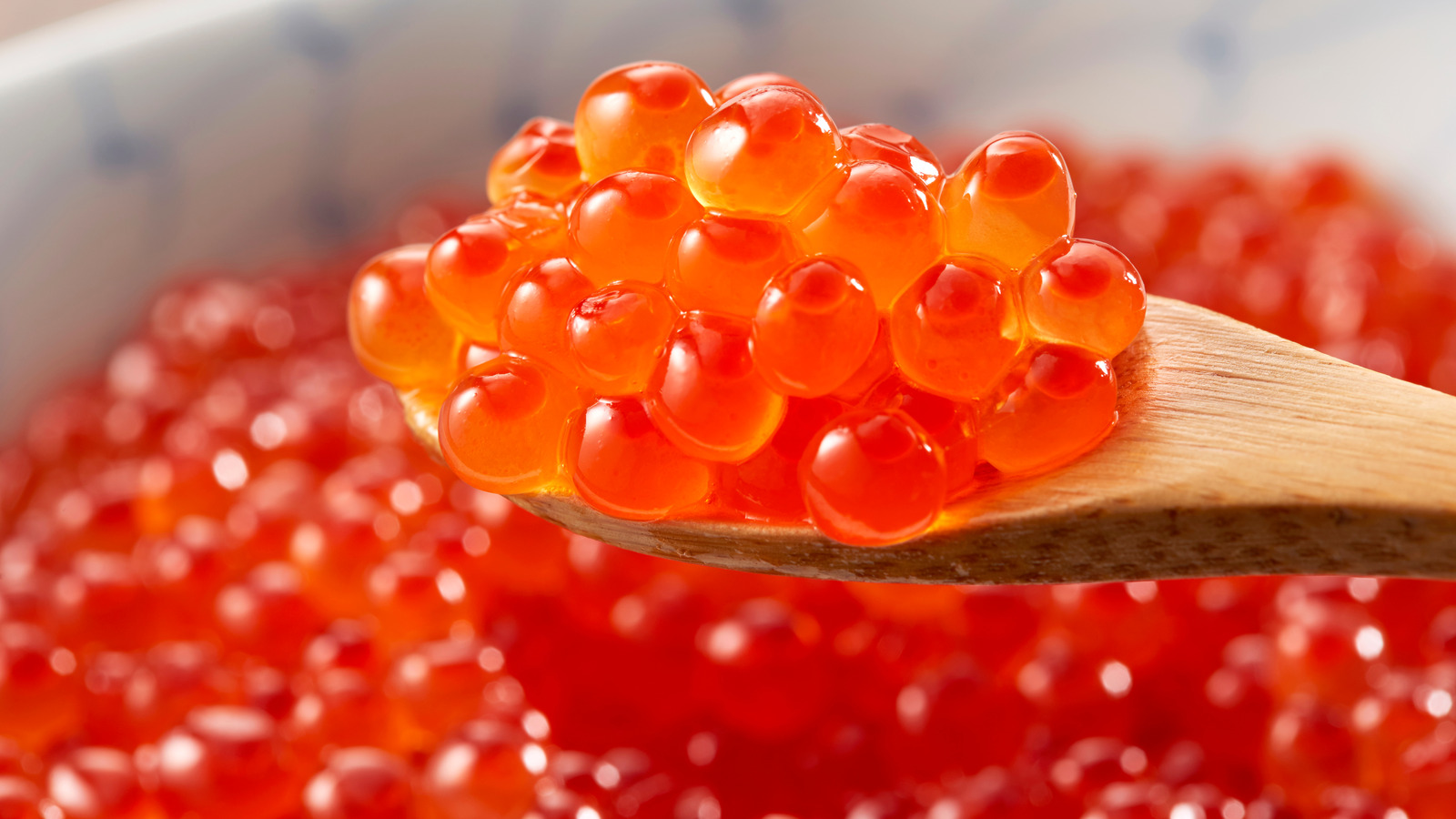
The Difference Between Masago And Tobiko
Nutritional Value: Tobiko is rich in vitamins, protein, and omega-3 fatty acids, making it nutritious. On the other hand, masago is also packed with nutrients, such as protein, selenium, magnesium, and other essential vitamins and minerals. Texture: Tobiko has a much crunchier texture compared to masago.
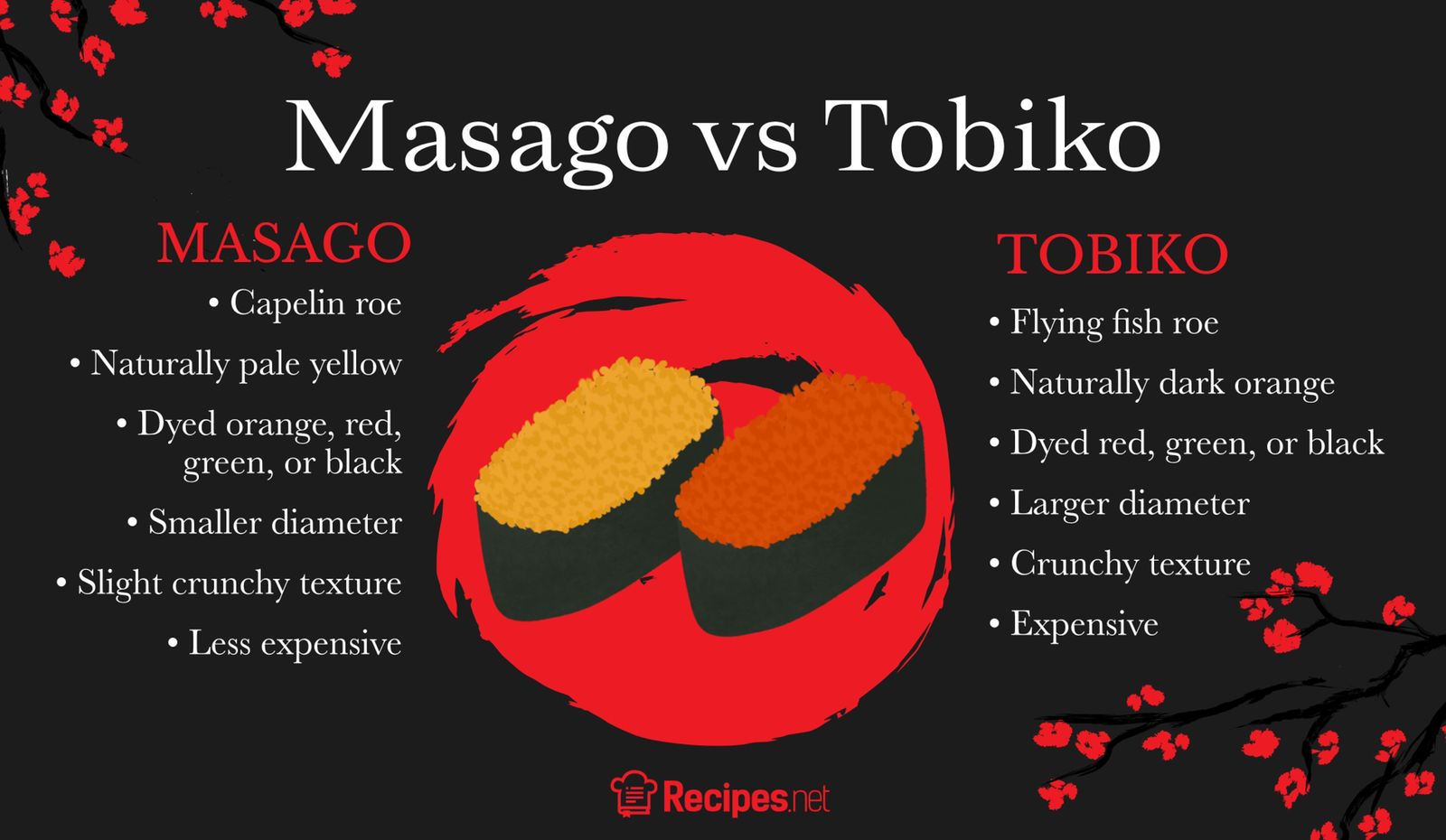
What Is Masago? Everything to Know About This Sushi Ingredient
In contrast to masago, tobiko are eggs from flying fish. Tobiko, while also tiny, is generally larger than masago, and comes in shades of orange to red. You can tell tobiko from the signature "crunch" when you bite into the eggs. Their firm texture gives a nice pop, and the taste is noticeably sweeter and can have a salty bite depending on.

Tobiko Vs Masago What are the Differences Carmela POP
The Difference Between Masago And Tobiko Shutterstock By Erica Buehler / June 1, 2021 3:32 pm EST To understand the differences between masago and tobiko, let's start with the basics. Masago is also known as capelin fish roe, and tobiko is known as flying fish roe, and roe is a general term for fish eggs.

Tobiko & Masago sushi
February 16, 2023 If you've eaten sushi, you've likely tried tobiko and masago. These crunchy, colorful fish eggs are everywhere but fly under the radar. This post explores their similarities and differences, their taste, where to find them, and more. Overview Tobiko vs Masago Price Difference Other Fish Roe Types Gunkan, Quail Eggs, Rolls

What Is Tobiko In Sushi? Learn All About It Here! • BoatBasinCafe
The main difference between tobiko and masago is the size of the individual eggs, the texture, and the color. In fact, tobiko comes in a range of colors including orange, red, green, and even black. Tobiko has a mild flavor that is sometimes referred to as sweet or smokey, and the color can be shockingly bright.
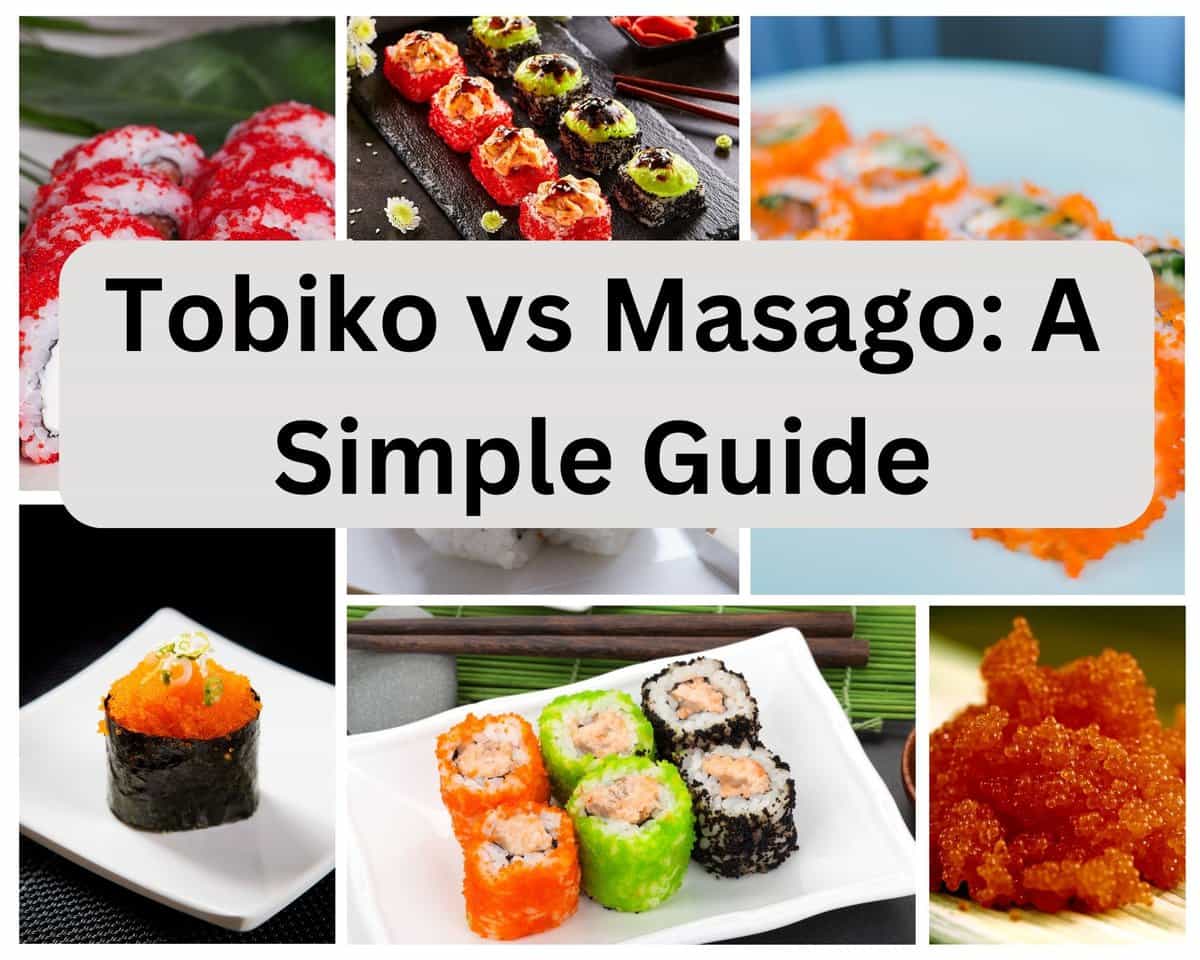
Tobiko vs Masago A Simple Guide Drizzle Me Skinny!
Let's find out! Jump to: What is tobiko What is masago What does tobiko and masago taste like How is tobiko and masago served Which is better tobiko or masago? Where can I buy tobiko and masago? Is tobiko the same as caviar? Is fish roe the same as masago? Want to learn more about differences in ingredients?
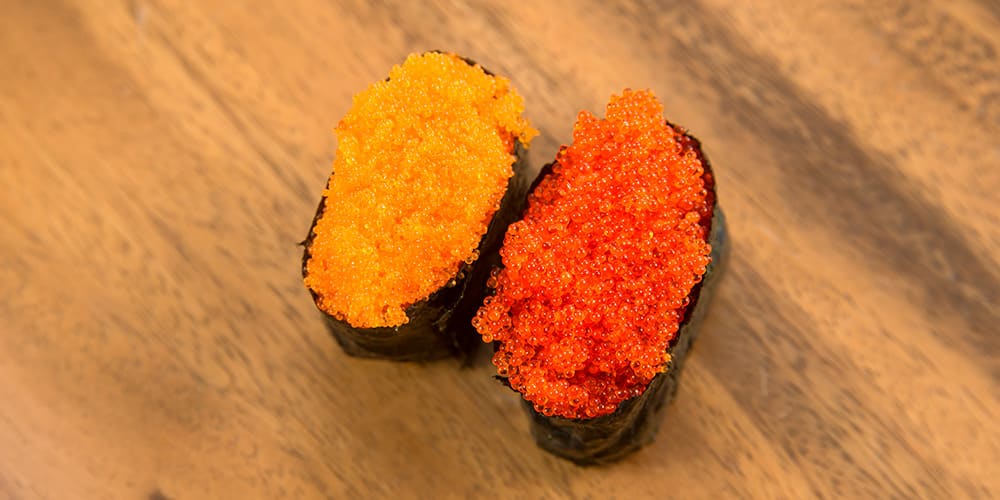
Masago vs Tobiko Sushi The Japanese Bar
The main difference between the two types of eggs is that Tobiko comes from a tropical flying fish, and Masago comes from an Artic Atlantic fish called the Capelin. Of the two types of fish roe, Tobiko is the most well known with its bright red coloring and crunchy texture. It is added to various types of sushi rolls, which has a mild taste.
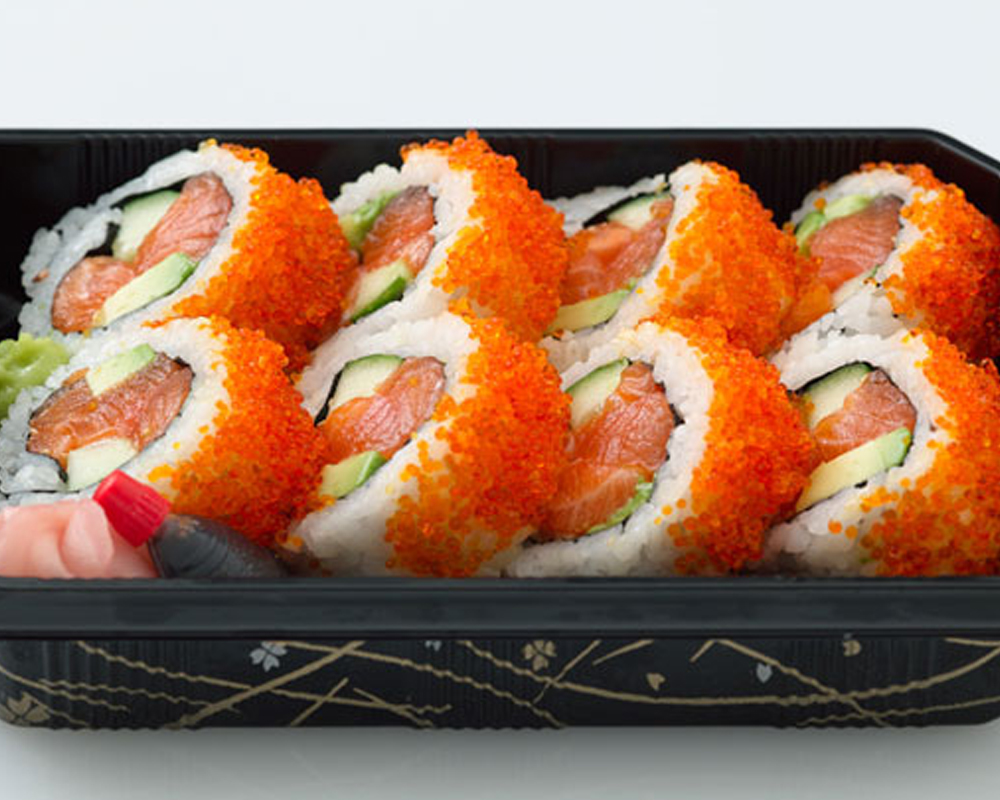
Tobiko vs Masago
Masago vs Tobiko: Key Facts - Masago is typically colored using food dye rather than squid ink. - There are different varieties of masago including red masago and wasabi masago. - Masago tastes similar to tobiko, but slightly milder, with a subtly sweet, salty, and citrusy flavor. - Masago is typically cured in soy sauce, MSG, high fructose corn syrup, and food coloring agents. - Masago and.
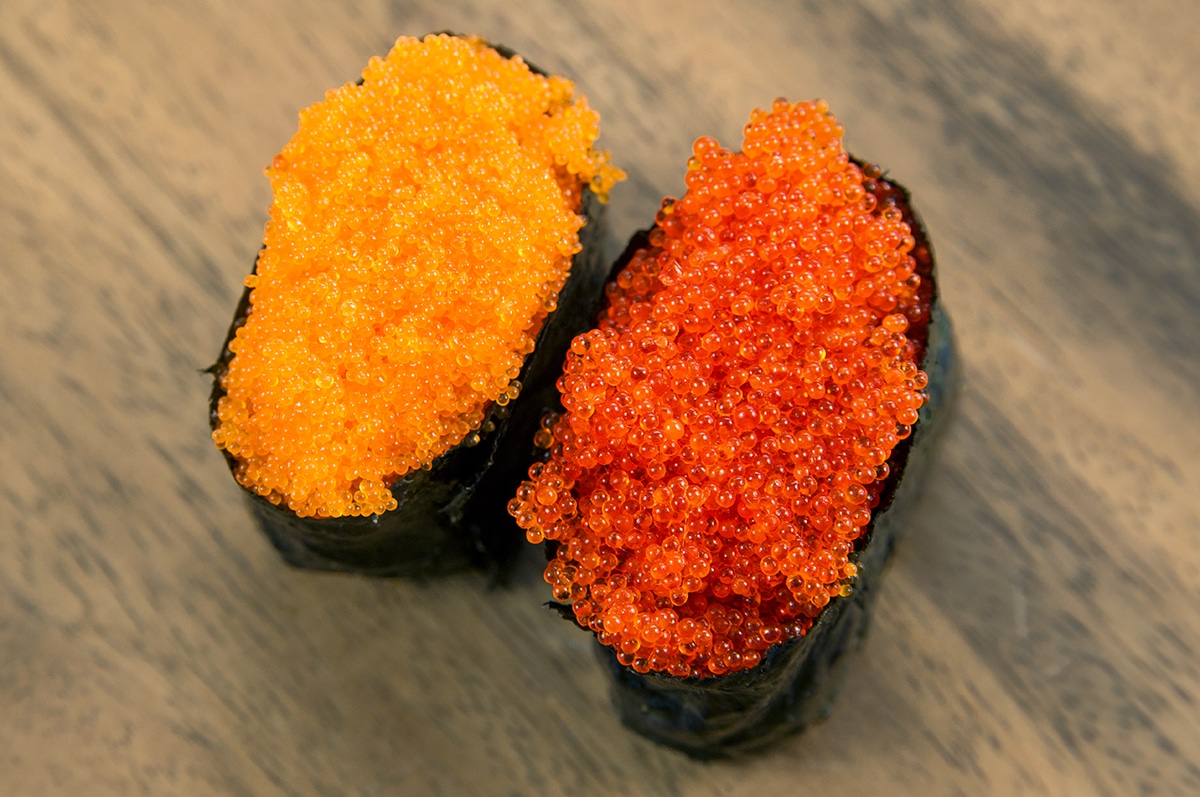
Tobiko and Masago Sushi, Types, Sustainability, + (2023)
Appearance One of the easiest ways to tell these ingredients apart is to look at them. Tobiko is larger than masago, and their colors are entirely different. Tobiko's natural color is burnished gold or orange. However, sellers frequently use artificial dyes to turn the eggs into vibrant colors. Some sellers artificially color masago, as well.
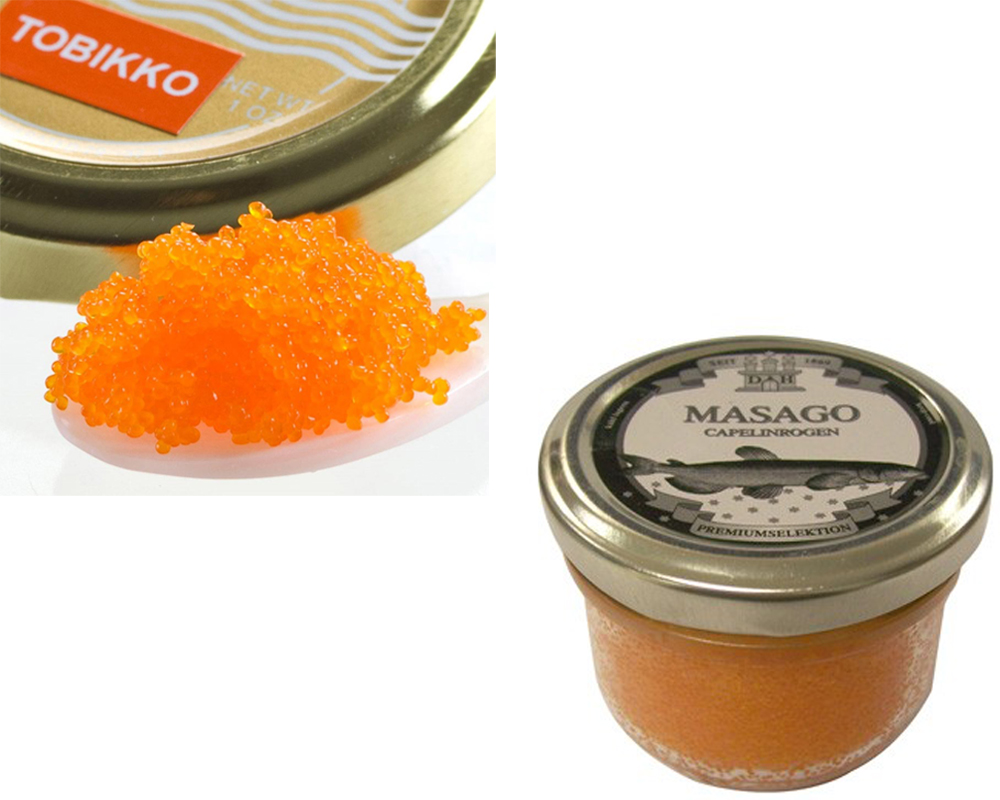
Tobiko vs Masago
Ikura Caviar Summary Roe are fully ripe eggs from fish and other marine animals. In food, roe refers to the eggs as a dish or garnish. There are different ways to prepare roe, depending on the type.
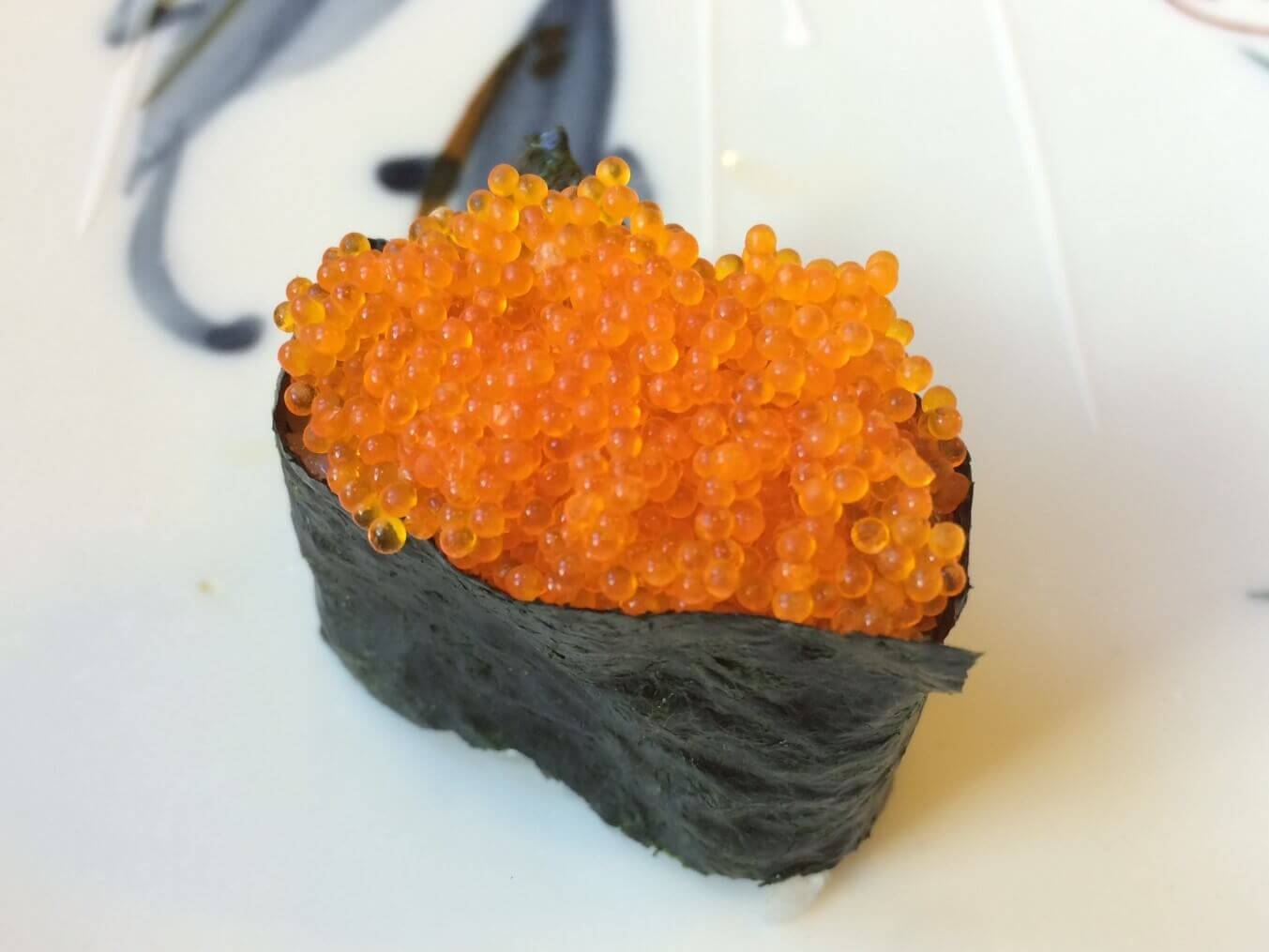
What’s the difference between Tobiko and Masago? Sushiblog
By Elias Nash | May 23, 2023 11:00 pm EST Despite only being introduced to the United States around 1970, sushi has ascended to become one of the most popular foods in the country. That means you've probably encountered tobiko and masago on more than one occasion.

What Is Masago In Sushi? Learn All About It Here! • BoatBasinCafe
It is said that during the Russo- Japanese War (1904-1905), the preserved loose salmon roe Russian soldiers ate found their way to Japan, together with the name "ikra," which later became "ikura."

Tobiko Vs. Masago A Comparison Between The Two Types Of Sushi Roe
Home & Family Food & Drink Tobiko Vs. Masago: A Comparison Between The Two Types Of Sushi Roe Tobiko and masago roe are popular sushi items—but what's the difference? By Ashley Brewer November 17, 2021 | 9:45 a.m. CST oxyzay/Shutterstock.com
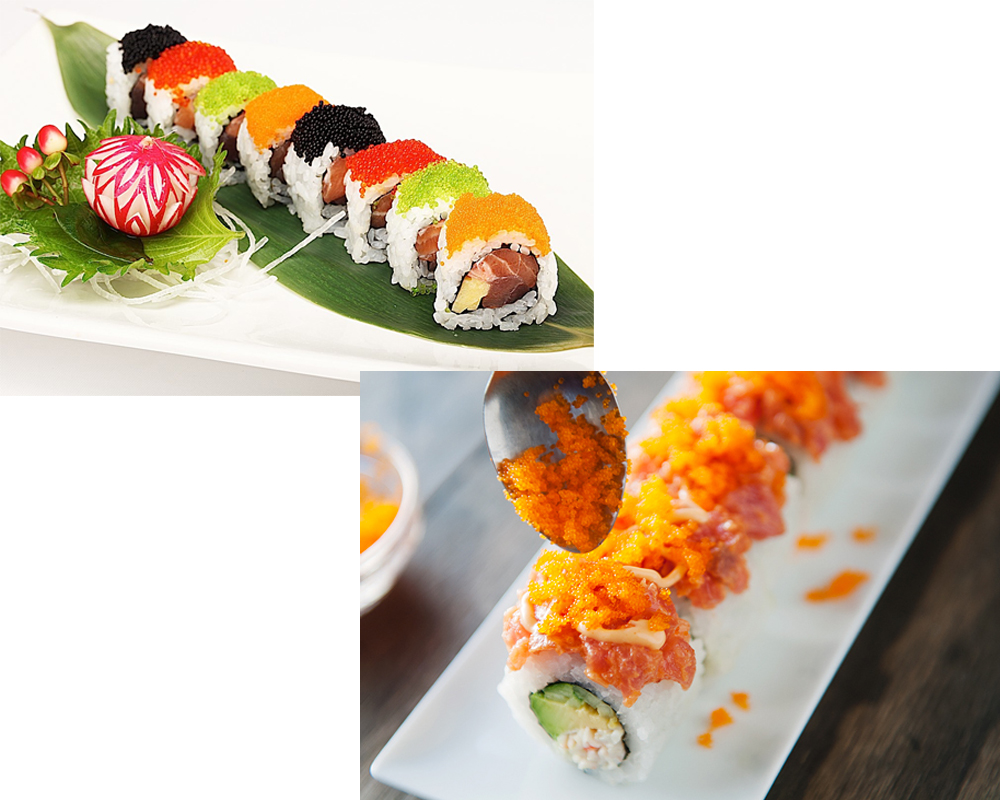
Tobiko vs Masago
The main difference between tobiko and masago is that tobiko is roe or fish eggs from flying fish and masago is roe from smelt fish. If they look similar, how different can they really be? Let's take a further look and learn more about their taste, texture, and other characteristics that set them apart.